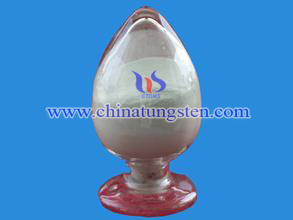AMT Production Technical State
- Details
- Category: Tungsten Information
- Published on Monday, 14 March 2016 16:54
With the promotion of the petroleum refining industry, research and development of tungsten catalyst have gained widespread attention. The active component of this catalyst - tungsten trioxide, is used as a catalyst carrier, as spherical silica, aluminum oxide prepared by dipping and pyrolysis ammonium metatungstate (AMT). This is a direct power in recent years to promote the development of AMT. According to the research and analysis, AMT may be the promising alternative raw materials of doped tungsten production, such as materials of tungsten wire, cerium tungsten electrode, to replace ammonium paratungstate(APT)., the current material of tungsten products with widespread use.
There are numerous process for AMT production, but the thermal degradation method using APT as the raw material still have the edge even within the traditional period and foreseeable future. The advantage is that the process is relatively simple and easy to operate. The main disadvantage is the low direct recovery, for example, the direct recovery of AMT is usually 70-80% in several domestic manufacturers. Therefore, there are a lot of patents on pyrolysis equipment for the research and improvement in the United States, so that the direct recovery of AMT has reached a high level of 98%. The key to improve the direct recovery of AMT is thermal degradation device. U.S. Patent proposes three thermal degradation of the furnace, including the plate multiple hearth furnace, tube multiple hearth furnace and microwave, the common feature of which is to make the pyrolysis temperature of raw material APT trend in uniform, avoiding two situations affecting the direct recovery that the pyrolysis temperature is too high or too low.
There are many studies for wet process using ammonium tungstate as the raw material and applied for a patent, including liquid-liquid extraction, ion exchange, electrodialysis, and so on. Advantages of these production processes are the ability to save equipment investment, continuous operation, automatic. However, putting the results of these studies into application of production practice still need a lot of work to do.


| AMT Supplier: Chinatungsten Online www.ammonium-metatungstate.com | Tel.: 86 592 5129696; Fax: 86 592 5129797;Email:sales@chinatungsten.com |
| Tungsten News&Tungsten Prices, 3G Version: http://3g.chinatungsten.com | Molybdenum News & Molybdenum Price: http://news.molybdenum.com.cn |